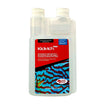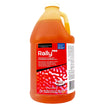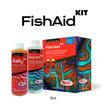- No products in the cart.
Fish Antibiotics Treatment Ensuring Health And Wellness In Aquatic Pets
18
Apr
Antibiotic treatment in fish is a critical component of aquatic pet healthcare, particularly when dealing with bacterial infections. Whether you maintain a simple home aquarium or manage a larger aquatic system, understanding when and how to use antibiotics can mean the difference between life and death for your fish. This blog explores the essentials of fish antibiotics treatment, including when it's necessary, how to administer these medications correctly, and what precautions to take to ensure the health and wellness of your aquatic pets.
Understanding the Need for Antibiotics in Fish
Bacterial infections in fish can manifest in various ways, such as ulcers, fin rot, tail rot, and systemic infections. Symptoms to watch for include lethargy, red streaks or spots on the body, cloudy eyes, swollen abdomen, and unusual behavior like rubbing against objects. Recognizing these signs early is key to effective treatment.
Selecting the Right Antibiotics
Antibiotics should only be used when there is a confirmed bacterial infection. Viral or fungal diseases will not respond to antibiotics, and unnecessary use can lead to resistance, harming the overall efficacy of these drugs. Common antibiotics used in fish include:
Amoxicillin: A broad-spectrum antibiotic that treats infections like columnaris and fin rot.
Kanamycin: Effective against gram-negative bacteria and useful for treating kidney and systemic infections.
Erythromycin: Used for treating bacterial infections like swim bladder disease and skin infections.
Tetracycline: Treats a wide range of bacterial infections, including those causing ulcers and gill disease.
It is crucial to identify the type of bacteria involved in the infection to choose the most effective antibiotic. This often requires consultation with a vet who can perform appropriate tests.
Proper Administration of Antibiotics
Administering antibiotics to fish can be done in several ways, depending on the type and severity of the infection:
Medicated Food: Ideal for systemic infections, medicated food ensures the medicine is ingested directly. This method is effective but requires ensuring that sick fish are eating adequately.
Bath Treatment: For external infections, antibiotics can be dissolved in the aquarium water. This method treats all fish in the tank but can impact water quality and filter bacteria.
Injections: In severe cases, especially in larger or more valuable fish, injections provide the most direct method of administration. This method typically requires professional execution.
Dosage and Treatment Duration
Following the correct dosage and treatment duration is vital for the success of the treatment. Underdosing may not effectively clear the infection, and overdosing can be toxic. Treatment durations typically last from 5 to 10 days, but it's important to complete the full course, even if the fish appears to recover, to prevent a resurgence of the infection.
Monitoring and Adjustments During Treatment
Throughout the treatment period, monitor the health of your fish and the water quality:
Water Quality: Antibiotics can affect the nitrogen cycle by killing beneficial bacteria in the filter. Regular testing of ammonia, nitrite, and nitrate levels is essential during treatment.
Fish Health: Observe the fish regularly for any changes in symptoms or new side effects.
Filter Management: Consider using a separate hospital tank for treatment to protect your main tank's ecosystem. If treating in the main tank, you may need to temporarily adjust or remove chemical filtration like activated carbon, which can absorb medications from the water.
Conclusion
The use of antibiotics in fish is a powerful tool in combating bacterial infections but requires careful and informed handling to be safe and effective. Always consider antibiotics as a last resort after other management methods, such as improving water quality and quarantine, have been tried. Consulting with a veterinarian specialized in aquatic medicine is strongly recommended to ensure the appropriate diagnosis and treatment plan. Remember, the health and wellness of your fish depend on the responsible use of treatments like antibiotics. Keep informed, be observant, and act thoughtfully to maintain a healthy aquatic environment for your pets.






